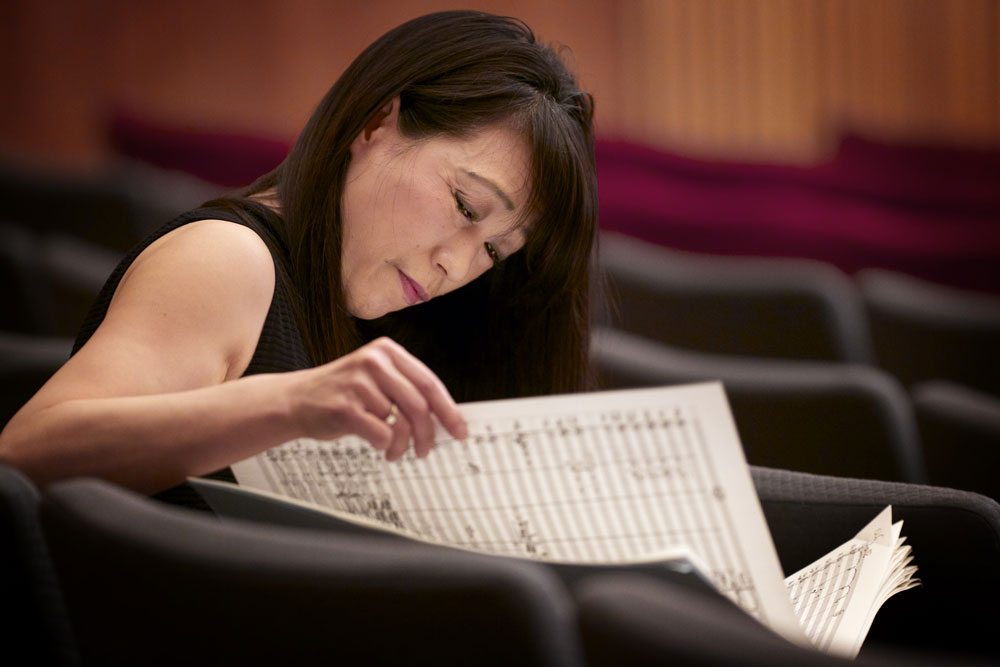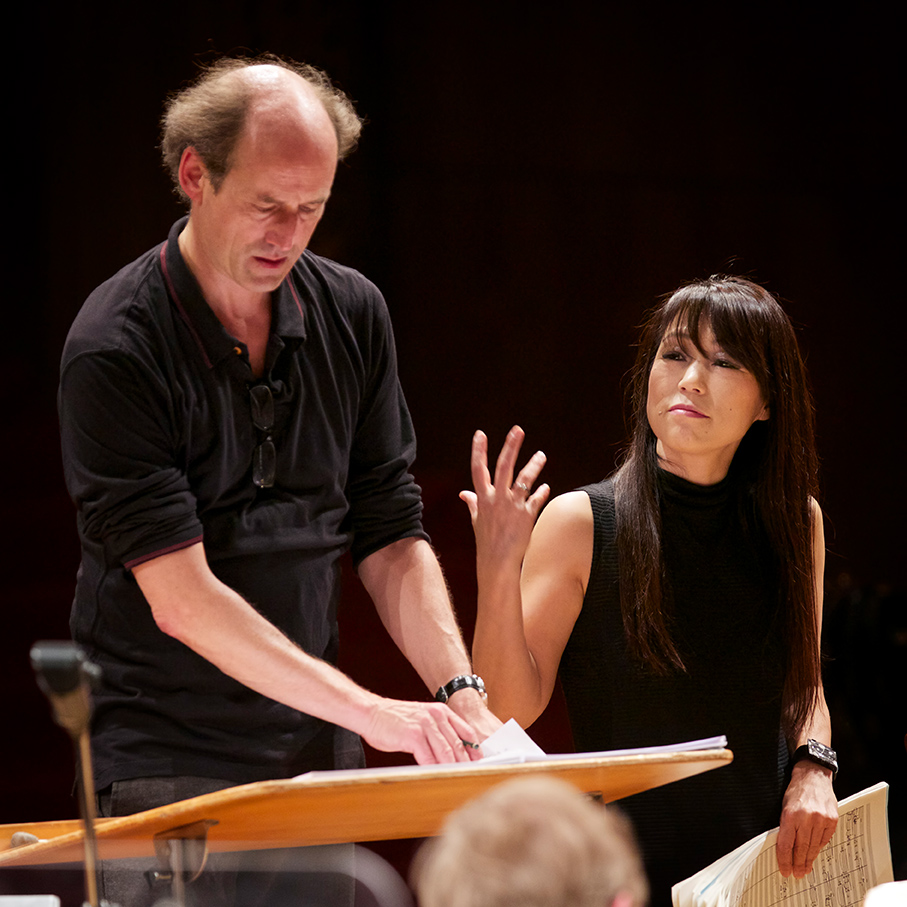27. April 2020
The Music of Unsuk Chin
Lucid sonic objects
No one has influenced her musicality as profoundly as György Ligeti, says Unsuk Chin about her composition teacher. One can hear that, as well. Both Ligeti and Chin attach great importance to the timbral quality of their music. The works of both composers also have another aspect in common: despite all their differences, their musical languages are so idiosyncratic that they balk at being classified in the stylistic development trends of new music. For the Korean composer, this means that her works are only rarely performed at the leading festivals for contemporary music.
On the other hand, her music can often be heard in classical programs, which is very unusual for modern music – particularly since Unsuk Chin by no means accommodates herself and composes anything but „pleasing.“ Her artistic attitude is uncompromising. When she writes a piece, her only concern is the music. She doesn’t care what happens to the work afterward, she says. With the simple sentence, „I just remain who I am,“ she describes an essential characteristic of her work: being authentic. Her oeuvre radiates this authenticity and is the basis of her great success, proof that demanding contemporary music can easily reach a broad audience.

Unsuk Chin has lived in Berlin for three decades, sees herself as part of international music culture, and on no account wants to be pushed into an „Asian“ box just because she is Korean. Although she occasionally uses Korean instruments, her compositional thinking is international. In the piece „Gougalon,“ for example, she quotes the title of an Old German word that roughly means „to gawk.“ It refers to fairground and street performances that Unsuk Chin recently experienced in China and also knew from her youth in Korea. Her piece, therefore, doesn’t allude to a specific culture but epitomizes imaginary folk music. Unsuk Chin stylizes folk musical peculiarities and integrates them into her musical language, which is a complex contemporary one.
While not often heard directly in her music, the piano plays an essential role in Chin’s musical life. In fact, the composer would have liked to become a pianist. Her unfulfilled dream is realized through her works for piano. In addition to a series of solo pieces, there are two orchestral compositions in which the keyboard instrument appears, among them the “Double Concerto.”The soloists on piano and percussion, however, do not take center stage at all. Indeed, the composer aims to merge the solo instruments with the ensemble sound, thereby abolishing the basic principle of the concerto, the juxtaposition of soloists and ensemble. Unsuk Chin speaks of a “fusion,” which should result in a homogeneous whole, a self-contained resonant object.
The composer also wants to create similar sound structures in other works. The chromaticity of the music plays a central role. Unsuk Chin’s interest in colors is based on her personal experience. From an early age, she has associated each tone with a concrete vision of color, for example, yellow with black stripes. These are the elemental worlds of experience that characterize Chin’s compositions. The immediate, spontaneous effect of her music certainly has to do with this focus on timbre, probably the most palpable of her musical parameters.
The colorfulness of Chin’s music also includes noise. In “Double Concerto,” some strings of the piano are prepared so that percussive effects emerge. This effect flows into the overall sound, which Unsuk Chin creates with her very refined sense for the sound gradation of light and shadow of the instruments. Chin’s thoughts on sound also include her special interest in women’s voices, which appears in “Cantatrix Sopranica.” The work is based on nonsense texts so that the lyric setting remains mostly free of semantic associations. Here, too, Unsuk Chin is concerned with sound. The composer aims at the symbiosis between text as sound and the sound of voices and instruments.
Chin’s expression of timbre deviates from the familiar. Her music is enveloped by a special aura, by the air of something unique, something never heard before. Descriptions of this tonal coloring prove to be difficult, which is why the music for lack of appropriate terms has been called “unfathomable,” “mysterious,” or “new impressionistic.”

This ambiguity is also because the carefully constructed objects hide behind the sonic façade. In Unsuk Chin’s music, timbre does not function as a supporting element of musical architecture. It is a surface contour at the forefront of the experience that makes the music appear natural and organic. This effect is the result of the strict construction of the music. Chin does not rely on intuition, gut feeling, or pure spontaneity. She tries to integrate all the elements of a piece into a structural concept. The result is that the music, even when it becomes dense and complex, appears clear and lucid and radiates an idiosyncratic brilliance.
Author: Hanno Ehrler
The article was first published in our brochure.